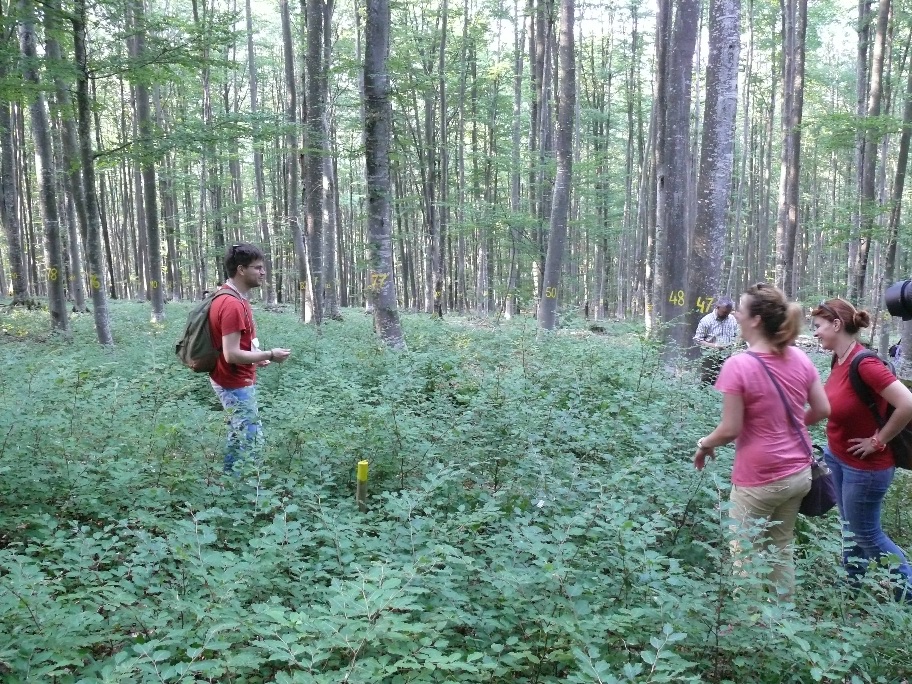Our trip comes to an end
Day 6 (Friday, 3nd of July 2015): On day six we visited Hungary and we enjoyed the company of LIFEGENMON Hungarian NFP dr. sc Sándor Bordacs, the state authority for forest reproductive material and forest genetic resources at the Hungarian Ministry, responsible for Forestry. First we visited the forest nursery in Tolna, operated from the Gemenc forestry enterprise (again following the state enterprise model which seems common in most of the 2nd transect drive countries). Hungary is divided into 22 forestry enterprises and the Gemenc forestry enterprise manages 39.000 hectares, of which 34.000 is forest. Once again the responsible for the forest ministry has only a regulatory role. Their (Hungarian) Poplar nurserie-practice seems similar to ours (clonal plantations, stool beds, demonstration plantations etc), but it is obviously different – more precise control procedure established for the protection of clones-genetic resources in the everyday practice.

Tolna nurseries -Hungary clone stool bed-03/07/2015
Another interesting stop was at a hunting reserve in the Gemenc area, famous for its game, mostly red deer and wild boar. There we had the chance to be informed, understand and see the different approach-mentality under which the Greeks practice hunting.
At the Mecsek forest enterprise, the forestry engineer and the director of the department, Szonyi Janos, welcomed us and presented to us the company’s organization and structure.
We also visited a 90-120 year old beech forest on a northern exposed slope mixed with oaks and linden, The bedrock was limestone with Karst holes. It was noted that common beach regenerates well. Beech stands are common in northern Greece, but in higher altitudes (above 800m) it is considered an easily regenerated species. It was also notable that Croatian forest enterprises are trying to increase the timber value extending the rotation period- age of maturity.
Of course Hungarian foresters seem also to use different cultivation practices, (final clearcuttings in small areas-around 1-3 hectares- at maturity age), which require disciplined logging and produce more or less even aged unions and stands, but with the continuous danger of regeneration gaps (even without grazing).
In contrast with that, in Greek forestry practice we are applying under canopy cuttings- selective thinning which allows us more flexibility- a more economically viable approach with shorter maturity ages producing smaller diameter (market needed) products. There are also smaller dangers for the regeneration (despite sometimes- light grazing from domestic animals). The drawbacks are that our logging procedures are more expensive, the resulting forest is uneven aged in large areas (actually not a drawback from an ecological stability point of view), and our stands will never reach maximum value maturity because of lack of logging discipline.
Day 7: (4th of July 2015).We visited Bjelovar the forestry enterprise from Hrvatske Šume- Croatia. Basically they presented us their very well established and maintained seed orchard of Pedunculate Oak, and a smaller elm conservation orchard. These orchards were very impressive and compered with our seed orchards and once again this observation created negative feelings.At the end of the day –that marked the end of the transect drive- we visited the Slovenian forest genetic monitoring plot for beech near Dvor in Slovenia. During the drive to the plot we observed that the beech stands of the area are relatively even aged stands of excellent timber quality. This is a result of combined favourable environmental conditions and group selection forest management practice. At the plot Domen Finžgar, a forestry engineer from the Slovenian forestry Institute presented the plot establishment procedure, marking and sampling.

Čazma -Croatia elm conservation orchard 04/07/2015
As the Slovenian plot is located in an even aged seed stand it was expected that the plot would present many “plus” phenotypes in a small area. Nevertheless the quality of the growing stock was excellent by the Greek “standards”. Also in this case the group selection procedures resulted in an even aged stand. Mechanized logging on stands with relatively high canopy brake (as in the case of seed production stands ) results normally in soil scraping and dense Beech regeneration.

Dvor – Slovenia genetic monitoring plot 04/07/2015














 Saving...
Saving...
Leave a Comment